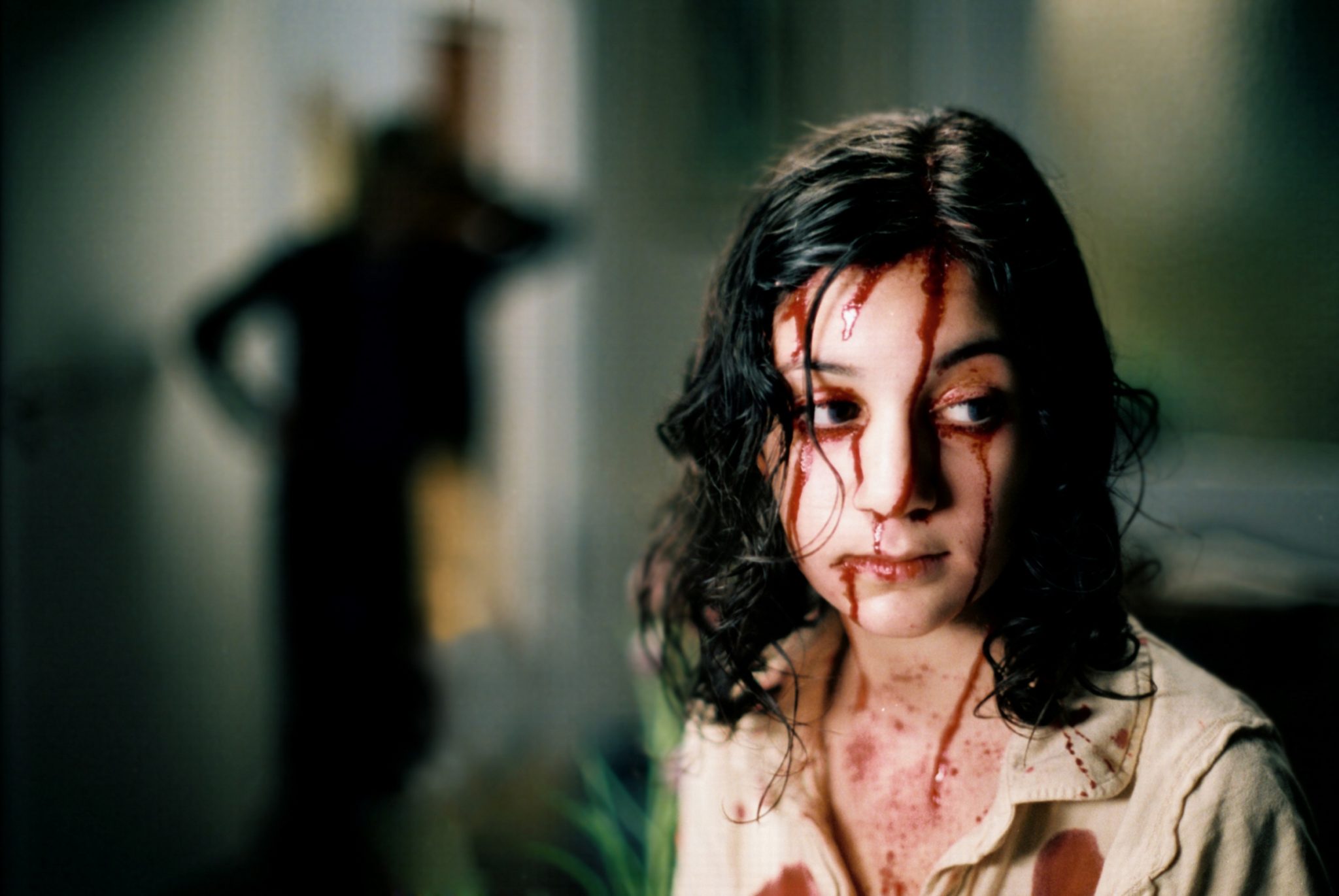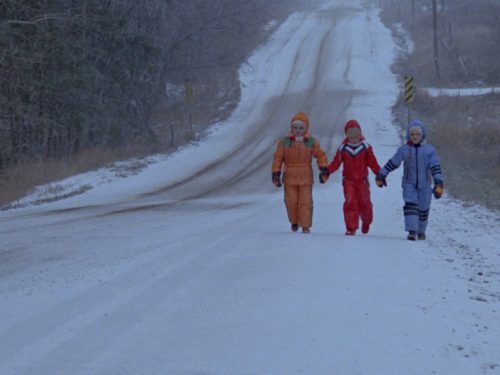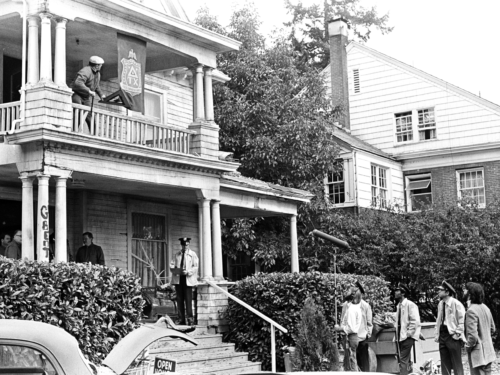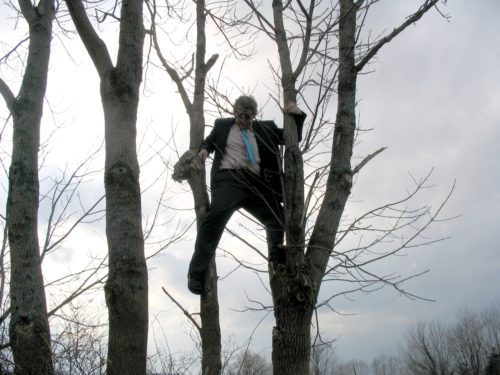“Let the right one in
Let the old dreams die
Let the wrong ones go …
They cannot do what you want them to do”
— Morrissey
Instinct. Every animal is born with instinct. It is how we survive. For humans, love is woven into the fabric of our survival from the first breath. The mother gives birth and is flooded with oxytocin — the love hormone — and feeds the helpless young. Feeding is the first instinct. Love is the necessary emollient that softens the way so the newborn can take what they need. If babies are pure innocence, innocence is pure hunger and need.
Let The Right One In (2008) is a story about innocence. It is a story of hunger and need.
One of my favorite additions to our cultural collection of vampire lore, this Swedish film questions the boundaries between adult and child, girl and boy, victim and assailant, love and survival. It tells the story of a young outcast, Oskar, who finds friendship with new neighbor Eli, an odd, dirty, androgynous child. As the two children deepen their relationship, Oskar must decide what to do with his newfound love after he discovers that Eli is a vampire who survives on fresh human blood.
Set in a stark, snowy suburb of Sweden, Let The Right One In is filled with muted, stale colors like the dinge of an old shag carpet. Everything feels slightly worn and neglected. It gives the film a viscerally gritty tone.
The film features two 12 year olds with needs unmet by their caretakers. Oskar lives with a neglectful mother with occasional visits to the country home of an alcoholic father. He is violently bullied at school daily, but no parent, teacher or friend comes to his aid.
Eli begins the film desperately starved. They are so malnourished that their stomach lets out painful growls. They are beginning to smell of rot. Their doting caretaker repeatedly fails in securing blood to feed them.
More October Horror: Malleable Fantasy: Coming Of Age In Lemora: A Child’s Tale Of The Supernatural
The two children meet alone, on a cold night in the courtyard playground of the apartment complex. Both have stepped away from their inadequate homes. Both are social outsiders: Oskar — a skinny, quiet victim; Eli — an unwashed vampire that must hide away from the world. Lonely and in need, they find each other.

Eli as vampire not only reflects the status of an outsider, they also personify the nebulous nature of societal definitions. Eli is neither boy nor girl:
OSKAR: Do you want to be my girlfriend?
ELI: Oskar, I’m not a girl.
OSKAR: Oh. Well, do you want to go steady or not?
Neither child nor adult:
“I’m twelve, but I’ve been twelve for a long time.”
— Eli
Eli resembles the purity of a human animal before the confines and expectations of a distorted society. Visually, Eli is often depicted as slightly feral and a little gross in her ferity. Separated from society, from other children, Eli simply is.
Borrowing words from the great Maurice Sendak, “I don’t believe in childhood. I don’t believe there’s a demarcation.” There certainly is none illustrated by Eli and Oskar — no demarcation between childhood and adulthood, boy and girl nor any between assailant and victim or love and need.
In a few shots it is difficult to distinguish Oskar, our young protagonist, from a young female character the film may be introducing. It could be assumed that his own androgyny and failure to exhibit typical shows of masculinity are part of the reason Oskar is a target for abuse at school. Oskar is the victim of bullies, yet we meet him with the knife wielded in his own hands, reciting menacing taunts to his own grimace reflected in his bedroom mirror.
“Squeal like a pig.
So squeal.”
— Oskar
These are the first words we here from Oskar. In fact, they are the first words of the entire film. His fear and neglect have turned to rage. He craves violence. We find out he is obsessed with violent crime. Later, on Eli’s advice, he bludgeons one of his enemy’s ears. There is little difference between him and his attackers. In a later scene, one of the school bullies is shown with his older brother, who intimidates with even more malevolence. All of the violent young, including Oskar, are stuck in cycles of brutality.
OSKAR: Who are you?
ELI: I’m like you.
OSKAR: What do you mean?
ELI: What are you staring at? Well? Are you looking at me? ‘So, scream! Squeal!’ Those were the first words I heard you say.
OSKAR: I don’t kill people.
ELI: No, but you’d like to. If you could … to get revenge. Right?
OSKAR: Yes.
ELI: Oskar, I do it because I have to. Be me, for a while. Please Oskar … Be me, for a little while.
Eli needs Oskar to feel empathy for them, to love them, maybe even to feel like Eli is an extension of himself. Then, just as the mother and child, Oskar will see Eli’s vulnerability and, reinforced by hormones of attraction, be impelled to care for Eli. Empathy and love are a means of survival.
We see the abilities of Eli’s current caretaker dwindle and dissipate. The middle-aged Hakan shows jealousy as Eli finds new love with young Oskar. Although there is still love between the companions, he can no longer help Eli survive. As he is nearly caught in his hunting expeditions, he pours acid over his face to disfigure himself so that the crimes do not lead back to his ward. In a final act of love, when there is nothing else to lend to Eli’s survival, he lets them devour him in his hospital bed — the only nourishment he’s able to provide.
Is there a point at which his survival was tied to Eli’s love? Where is the point at which the force of love becomes independent of its link with need and can perpetuate itself in its own momentum? The relationship between the immortally young Eli and their aging companion raises better questions than I have answers for.
More October Horror: George Romero’s Martin: Searching The Soul Of An Incel Vampire In 2019
As Eli begins to trust Oskar, Eli shows him that they become violently ill when given food, and that they cannot enter where they please without being invited. In a particularly memorable scene, Eli comes to Oskar’s apartment.
ELI: You have to invite me in.
OSKAR: What happens if I don’t? What happens if you walk in anyway? Is there something in the way?
Eli shows him their limitations by stepping through the threshold. As they take a step, blood begins to spill from their eye sockets and finger beds. They look as though they are going to burst. Oskar invites them in.
As Oskar and Eli fall in love, there is a collection of charming scenes between the two. Each sweet moment is reminiscent of childhood innocence intertwined with essential needs of survival.
They learn Morse code so they can communicate between their apartment walls when they are kept apart.

They take a date to the candy shop that ends in Oskar offering a blood bonding — a scene that’s been repeated in numerous coming-of-age classics. Eli gets violently ill from ingesting the candy. At the site of blood, the starving vampire throws themselves onto the floor, lapping up red droplets before telling Oskar to run.
Oskar keeps Eli hidden after they kill a suspicious townsman. They play a game of gently tapping fingers on each other’s back.
Love is not enough. As suspicions over Eli’s attacks rise within the suburb, Eli must leave town. Oskar returns to his mundane life. He has joined the swim team to try to become physically stronger and gain social capital. It is his attempt at being able to protect himself. One night while swimming laps in the school pool at night the bullies try to drown him. As he struggles for breath, a dismembered limb splashes into the pool behind him. Eli kills his bullies and saves his life — love again intertwined with survival.
The love story ends with Oskar on a train out of town, Eli in a large luggage box. They tap to each other in Morse code. Kiss. Kiss. Kiss.
“Let the right one slip in …
And when at last it does
I’d say you were within your rights to bite
The right one and say, ‘what kept you so long?'”
— Morrissey “Let The Right One Slip In”
Find the complete October Horror Archive here:

Follow our list of the 31 Days of October Horror on Letterboxd
(Split Tooth may earn a commission from purchases made through affiliate links on our site.)




